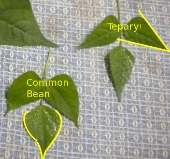Eric Hammond wrote:Greetings!
Do you create seperate seed banks for spring gardening and fall gardening? I have selected a bunch of seeds to save that did awesome with no irrigation in a hot dry summer, but our climate will change completely for the fall. Am I attempting to breed seeds that will do both or have two seperate seed banks?
I often plant different things at different times. For example, I'll soon be direct seeding carrots, onions, and various brassicas in spots where corn and beans are just about finished maturing. Yes, many will think it's a bit weird to direct seed those things in July or August, but it's been working well for me.
I've also been striving for several years to reduce maturity time as much as possible in all of my crops. When it comes to the same species for example with beans, corn and tomatoes, and in a climate similar to you yours, I've been working on growing two generations in one season. A couple days ago I direct planted small patches of all of those from mature seed that I harvested a few days before.
It's all the same seed though, I don't keep those planted in early May separated from those planted in late July. I do that mostly in an effort to develop varieties that can be planted pretty much anytime, thereby extending the window of opportunity to start over in the event an early planted crop is lost for some reason.







